On July 7th and 8th, in New York, there was Certified Scrum Product Owner Course delivered by two co-trainers: Avi Schenier, representing Jeff Sutherland’s company ScrumInc and Robin Dymon, CST from Innovel.
The class (size of about two scrum teams) was engaged in heated discussions, practical exercises and games. I had the honor of attending and participating in the course and was able to make a series of observations. Below, is the list of points that either very strongly resonated with me because they are already in-line with my personal views or are going to be leveraged to enrich my personal training methods and coaching techniques:
- The Scrum Guide: Scrum Values (courage, commitment, focus, respect, openness) – the latest, very important Scrum Guide amendment
- Management-Leadership: emphasis on management acting in Servant-Leadership, not Command-Control capacity. Exposing most common problems with mid- and first-line management
- Finding a good Product Owner: common challenges and good vs. bad candidates
- Brooks law: fallacy beliefs about how to return late projects back on track
- N(N -1)/2 formula
- Communication saturation and “Heat of Commutation” gone wild
- Story Mapping: purpose, techniques, strategic advantages
- Story Slicing
- Story dependency discovery
- “What to build first?”: Value vs. Effort conversation
- Sprint Interrupts and Emergency Procedures: how to deal with sub-optimal Scrum situations
- Use of Buffers for Emerging Requirements and Bugs and Customer Feedback
- Individual/Team Capacity Management
- Scrumming the Scrum: continuous, relentless improvement of Scrum itself
- Definition of Ready vs. Definition of Done: importance of understanding and agreeing to what is being delivered (and what is not!)
- Hardy-Weinberg Principle of task switching impact on productivity and Throughput: a great practical in-class game
- “Team Happiness is a Leading Indicator of Performance”
- Measuring Individual/Team Happiness Factor vs. Velocity
- Using Happiness Metrics as an Analytic Tool
- Agile Strategy Objectives: Convergent & Divergent design vs. Process Predictability & Adaptability
- Making story discovery real with Customer Personas
- “Why is it important for Product Owner to understand principles of Story Sizing and Estimation?”
- Importance of Business Value estimation in strategic planning (frequently forgotten by POs concept)
- Creating Executive Action Team – provide support and remove impediments
- Breaking the Iron Triangle of conventional Project Management
- Release Management: burn-up/down charts as means of communicating status
- Agile Metrics/Dashboards – why is it important for Senior Management to rely on empirical data produced by teams to measure progress
- Three Common Approaches to Release Planning: Deadline-based, Regular-Departure, Value-Based
It was also a great experience to observe (and participate) in a daily scrum call, held by ScumInc folks during the lunch breaks. Jeff Sutherland and his entire team practice what they preach: every day, around the same time (noon), they meet virtually, from multiple locations, to debrief each other on progress of their sprint-in-flight. Below, is the illustration (collage of different locations) of how they do it (from Avi’s laptop):
Daily Scrum With Jeff Sutherland and ScrumInc Team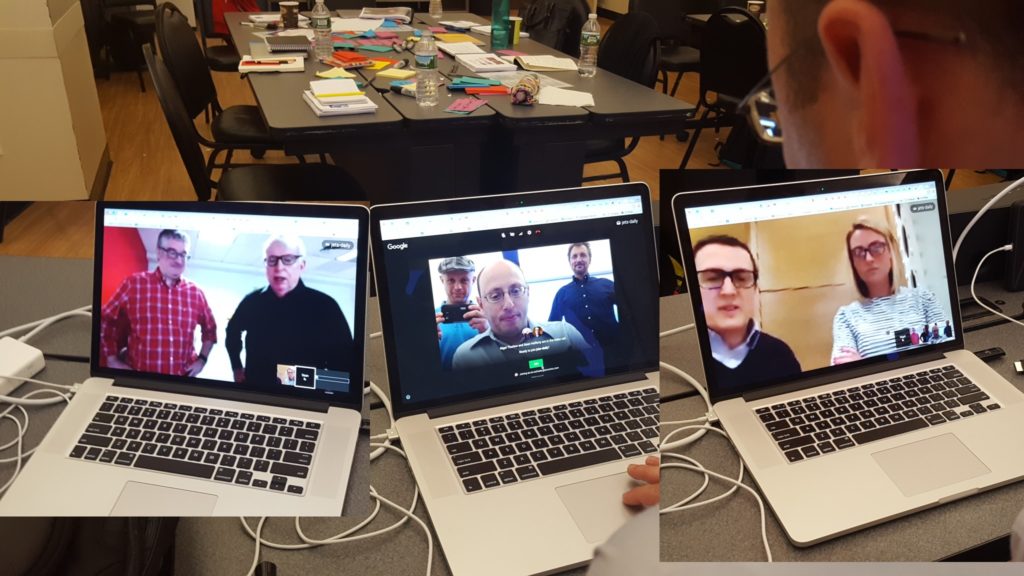
My Kodak moment with Avi (center) and Robin (right) :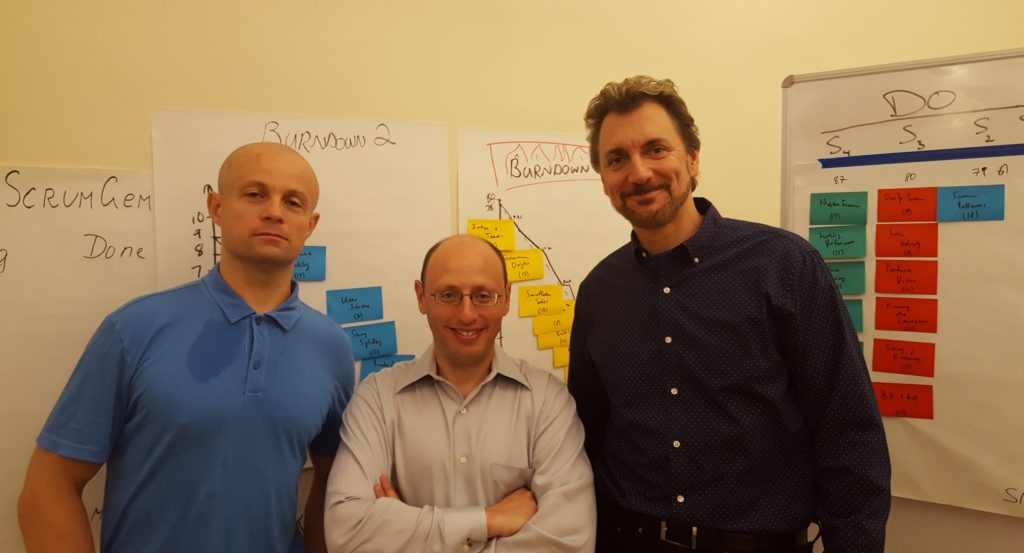
Additional Kodak moments from the course: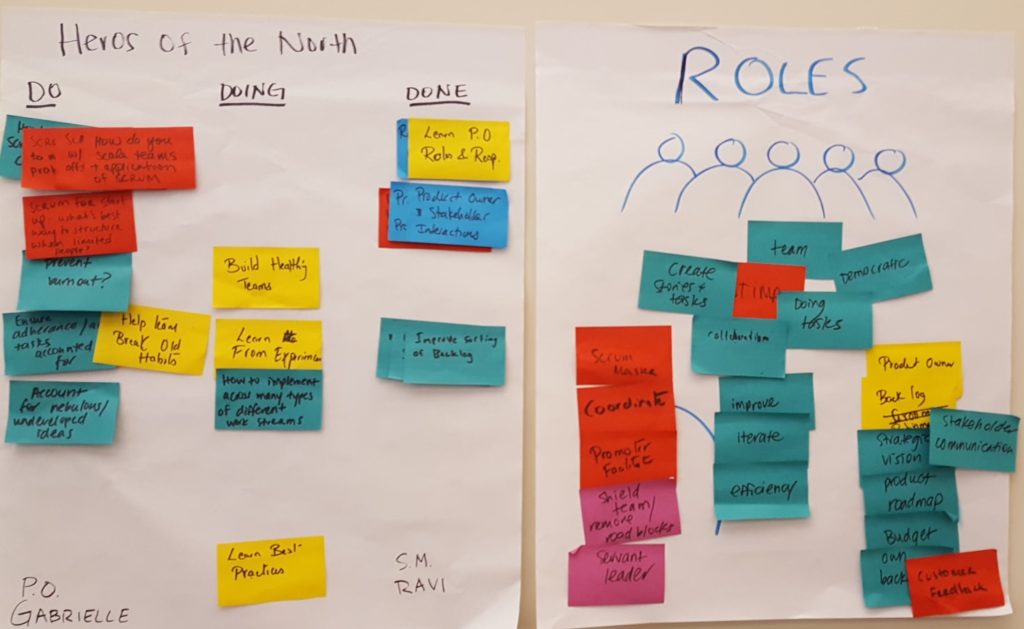

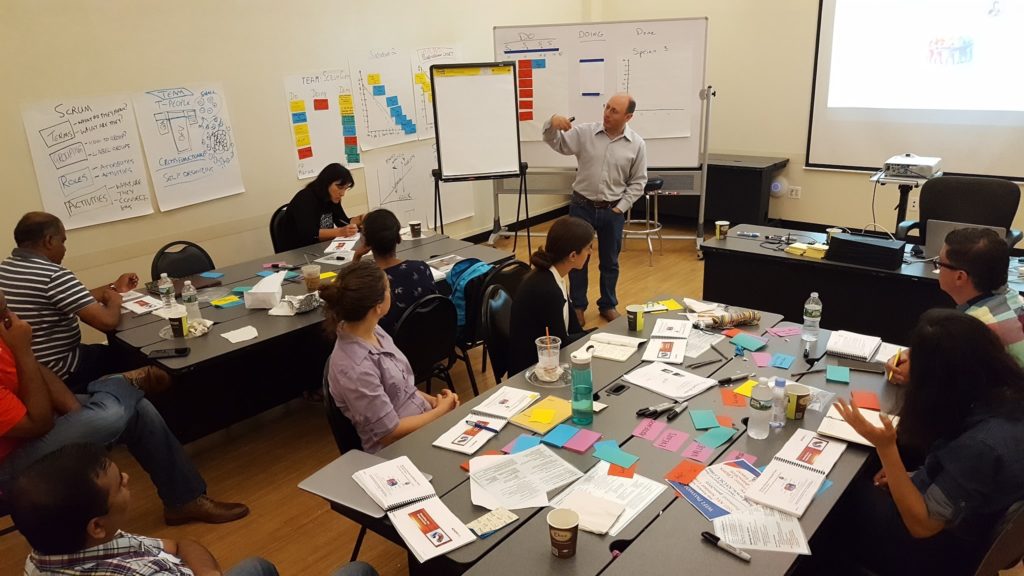
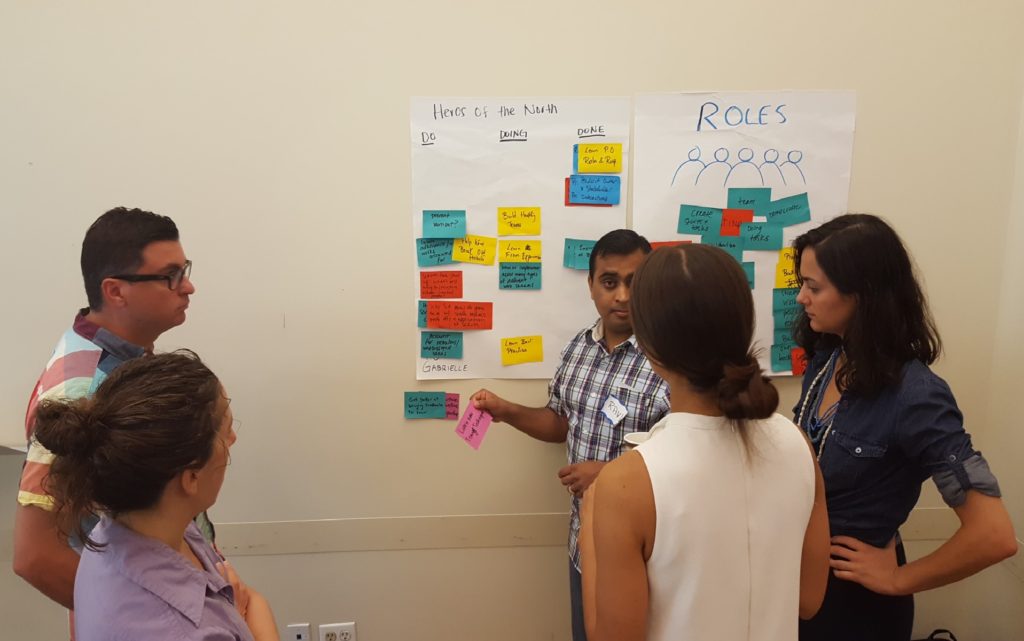
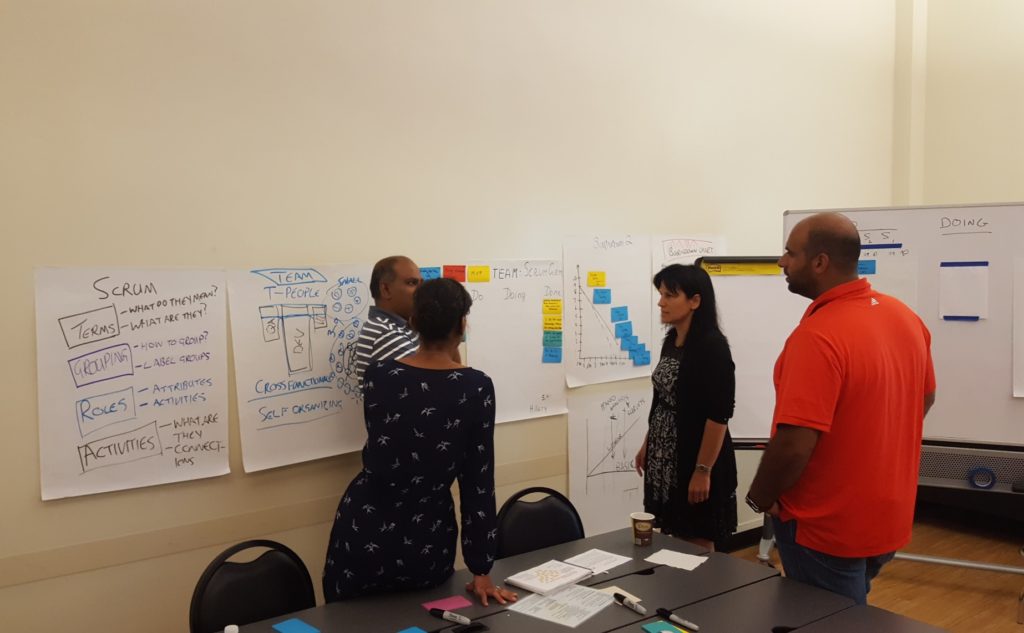
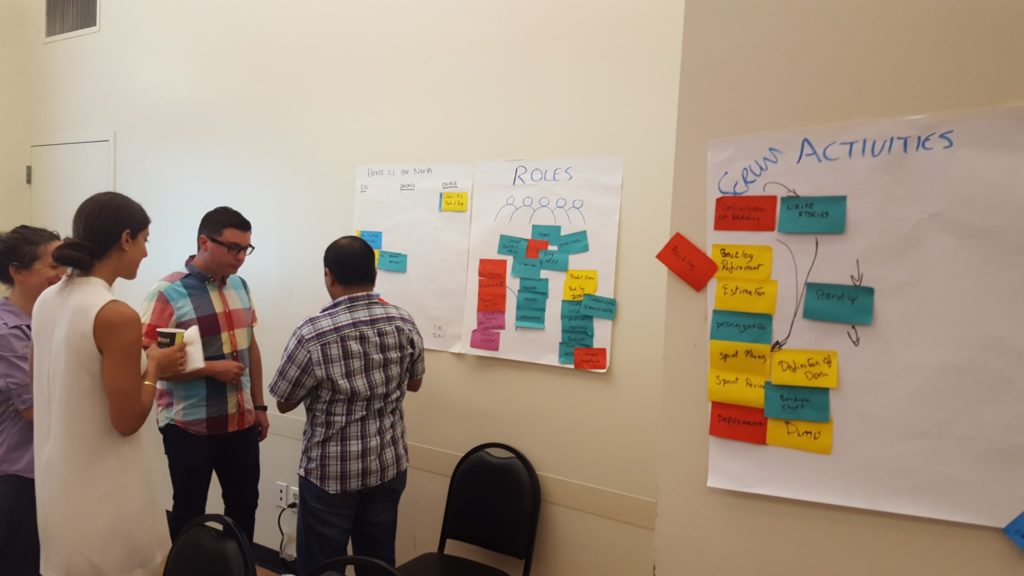
The Product Owner has a very important role in Scrum and it is great to see a course designed to help Product Owners understand Scrum better. The key points given in the article are quite useful and important. Thank you for sharing!